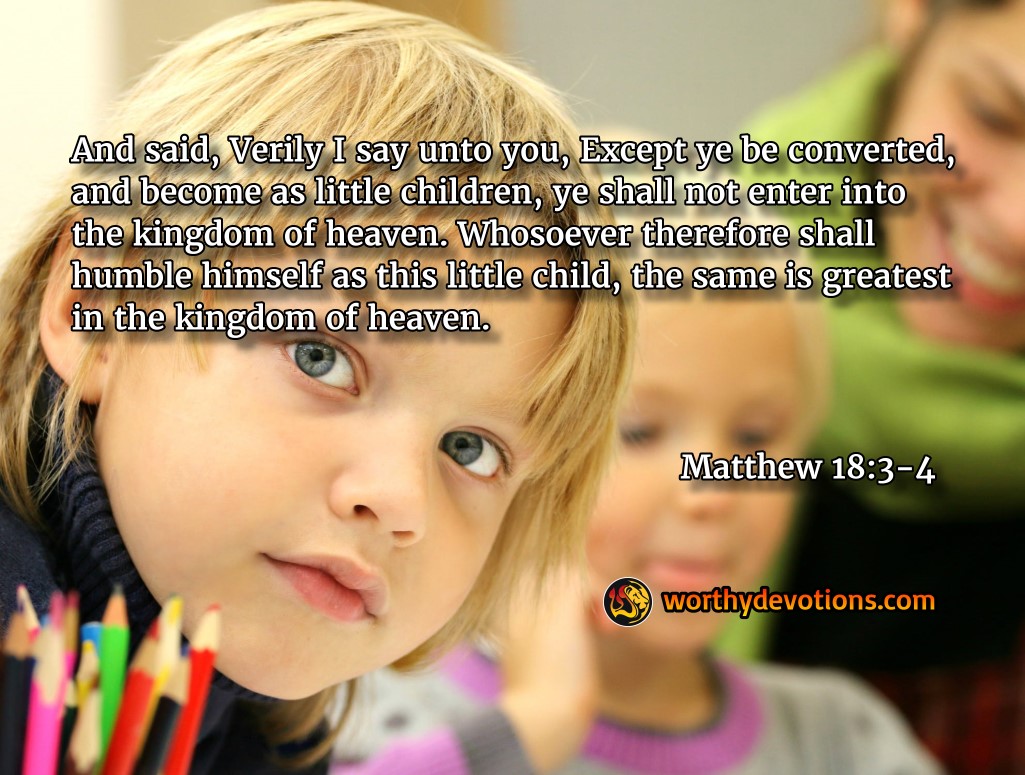Matthew 18:3-4 And said, Verily I say unto you, Except ye be converted, and become as little children, ye shall not enter into the kingdom of heaven. Whosoever therefore shall humble himself as this little child, the same is greatest in the kingdom of heaven.
One of my favorite “hidden” lessons in the Pesach (Passover) celebration “Seder” meal is the mystery of the “afikomen.” This specially prepared meal– during which the participants are reminded of Israel’s supernatural deliverance from Egyptian slavery by the mighty hand of God– also includes 3 particular pieces of matzah, (unleavened bread). These three are placed in a “matzah tash” — a special pouch containing three compartments.
Some rabbis explain these matzot (matza in plural) as representing the three Patriarchs – Abraham, Isaac and Jacob. Others suggest that they represent three individual groups of Jewish people – the Priests, the Levites, and the Israelites. However appropriate these explanations may be, they seem to fall short of adequately explaining the tradition in which the leader of the Seder breaks the middle matzah in two, and hides half of it in a white linen cloth until the end of the meal. As the children finish their meal, they begin to search high and low throughout the house for the afikomen – and the one who finds it returns to the leader of the Seder demanding a reward in exchange for returning it! At the conclusion of the Seder, according to Rabbinic law, a small piece of the afikomen must be broken off and eaten by everyone present, as a reminder of the Passover lamb.
What is this “afikomen”? And what could be the real meaning concealed in this ancient tradition? I suggest that the answer to this question may be discovered when we learn that “afikomen” is not a Hebrew word, but comes from the Greek word – ikneomai – which literally means, “I CAME!” May this not point to the reality that Messiah’s first coming as the Passover “Lamb of God”, was “hidden” in some way from the Jewish people, as the Lord Himself said? [Luke 19:42]
Is it simply coincidence that matzah is pierced and striped? Or might this also be a “hidden” and providential indication of Messiah’s experience at His first coming? “He was wounded for our transgressions…” and, “by His stripes we are healed”; [Isa. 53]. Why was only the middle matzah broken? Because only the Son was “broken” for us? Why must the afikomen be wrapped in linen and hidden away? Because the Son who died was wrapped in linen and hidden away, and may only be found through inquisitive childlike faith…..which is richly rewarded….
There are so many wonderful mysteries hidden in the Hebraic roots of our faith – yet, to me, this one stands out boldly among them– that one must come to God with the faith of a child – not through intelligence, religious ritual, or human wisdom– but simply accepting His word and His promises as children, believing and trusting them. Isn’t it beautiful that the Lord chose this humble way to reveal Himself?

